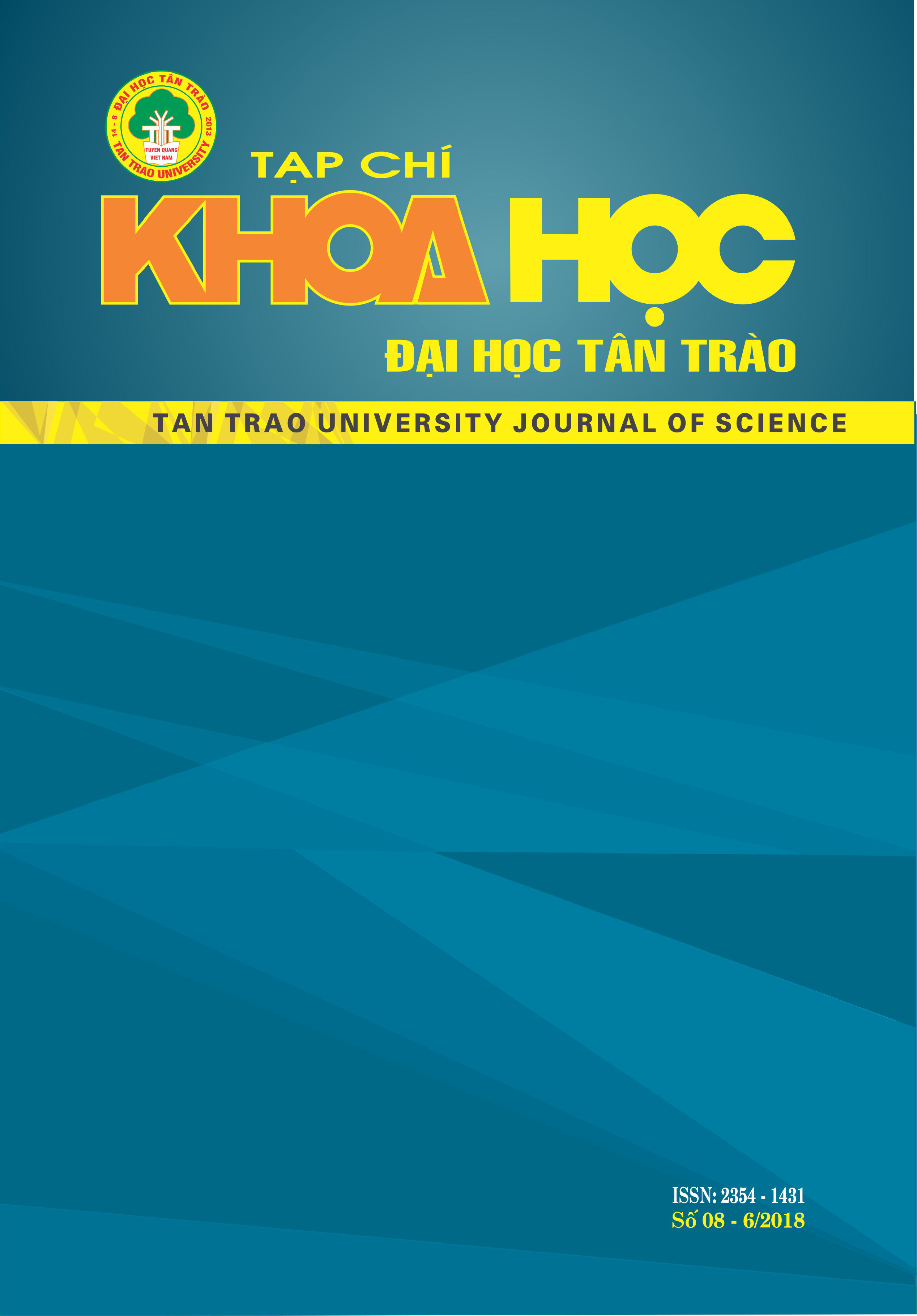Tết tháng Bảy với những quan niệm khác nhau
DOI:
https://doi.org/10.51453/2354-1431/2018/255Từ khóa:
Tết Tháng Bảy, văn hóa tâm linh, nhóm Tà y-Thái, Choang-Thái, Việt Nam.Tóm tắt
Tết Tháng Bảy được xem là cái Tết lớn thứ hai trong năm của các dân tộc nhóm Tày/Choang-Thái, ngữ hệ Thái-Kađai. Tư liệu về một số dân tộc thuộc nhóm này cho thấy rằng sự đa dạng trong quan niệm và thực hành tín ngưỡng ở những nhóm người, vốn cùng nguồn gốc xa xưa, nhưng đã có một quá trình tiếp biến văn hóa, do tiếp xúc với những người cộng cư, đặc biệt là trong những điều kiện sản xuất, mang lại sắc màu khác nhau cho cả đời sống tâm linh. Bởi thế, việc thực hành Tết này, bên cạnh sự tương đồng cũng có những nét dị biệt, không chỉ là về thời gian. Trong cuộc sống mới đầy biến động, do giao lưu thuận lợi và tiếp xúc dễ dàng, việc giữ gìn những nét riêng tiêu biểu cần được đặt ra, bởi chúng góp phần làm nên bản sắc văn hóa của mỗi dân tộc hay nhóm tộc người.
Tải xuống
Tài liệu tham khảo
1. Quỳnh Anh, Trịnh Văn Bộ (2015), Lễ hội Slíp slí của dân tộc Thái trắng, tỉnh Sơn La, khám phá Việt Nam 06/01/2015 10:51 GMT+7 http://vietnam.vnanet.vn/vietnamese/le-hoi-xip-xi-cua-dan-toc-thai-trang-tinh-son-la/111753.html;
2. Lò Xuân Dừa (2012), Tục làm Tết Síp xí của người Thái Trắng Phù Yên, trong Phong tục cổ truyền các dân tộc Thái, Tày, Nùng. H, Nxb Văn hóa dân tộc;
3. Vương Hùng (2006), Sự kiện Nùng Trí Cao. Đóng góp của các dân tộc nhóm ngôn ngữ Tày – Thái trong tiến trình lịch sử Việt Nam - Hội nghị Thái học Việt Nam lần thứ IV, Cao Bằng. H, Nxb ĐHQG Hà Nội, tr. 117-121;
4. Nguyễn Thị Thu Huyền (2015), Tín ngưỡng cầu mùa của người Thái trắng ở bản Mường Mô, huyện Mường Tè, tỉnh Lai Châu. In trong: Cộng đồng Thái – Kadai Việt Nam: Những vấn đề phát triển bền vững”. Kỷ yếu Hội nghị quốc gia Thái học Việt Nam lần thứ 7, Lai Châu. H, Nxb Thế giới, tr. 286-290;
5. Nguyễn Thị Quế Loan (2015), Món ăn trong thờ cúng của người Thái ở huyện Thuận Châu, tỉnh Sơn La. In trong “Cộng đồng Thái – Kadai Việt Nam: Những vấn đề phát triển bền vững, Kỷ yếu Hội nghị quốc gia Thái học Việt Nam lần thứ 7, Lai Châu. H, Nxb Thế giới, 2015. tr. 314-321;
6. Hoàng Tuấn Nam (2002), Một số tư liệu về lịch sử Nông Trí Cao Trong: Văn hoá và lịch sử các dân tộc trong nhóm ngôn ngữ Thái Việt Nam (Kỉ yếu "Hội thảo Thái học lần thứ III”). H, Nxb Văn hoá Thông tin, tr. 134-140;
7. Vàng Thị Ngoạn (2017), Nét đẹp văn hóa truyền thống một số dân tộc ở Lai Châu, tác phẩm gửi đăng ký theo đề án. phần 1, dân tộc thái 1;
8. Vuong Toan (2011), Cross-cultural phenomenon: Qīng míng (清明) in China and its variation in Vietnam (Một hiện tượng xuyên văn hóa : Thanh minh ở Trung Quốc và biến thể của nó ở Việt Nam). Proceedings of China-ASEAN Cross-Culture Communication Forum (2011) Culture Coexisting, Vision Sharing, Guiyang – China, pp. 110-112; Vương Toàn (2012), Một hiện tượng xuyên văn hóa: Thanh minh ở Trung Quốc và biến thể của nó ở Việt Nam. Tc. Nghiên cứu Trung Quốc, số 4 (128), tr. 70-74;
9. Vuong Toan (2017), Annual Festive Days of Nung and Tay Ethnic Groups (in Comparison with Festive Occasions of Zhuang People) In: Paper of the 2nd China-ASEAN Ethnic Cultural Forum: China-ASEAN Ethnic Cultural Heritage and the Belt and Road Initiative, edited by te Organizing Committee of the 2nd China-ASEAN Ethnic Cultural Forum. April 2017, Chongzuo, Guangxi, China, pp. 194-198, 464-468;
10. Đinh Ngọc Viện (2017), Nhóm Tày Ngạn ở Cao Bằng – Một số điểm tương đồng và khác biệt. Trong Kỷ yếu: Phát huy vai trò, bản sắc cộng đồng các dân tộc Thái – Kadai trong hội nhập và phát triển bền vững, hội nghị quốc gia thái học lần VIII, Nghệ An -2017, H., Nxb Thế giới, tr. 548-551.
Tải xuống
Đã Xuất bản
Cách trích dẫn
Số
Chuyên mục
Giấy phép

Tác phẩm này được cấp phép theo Giấy phép Quốc tế Creative Commons Attribution-ShareAlike 4.0 .
Bài báo được xuất bản ở Tạp chí Khoa học Đại học Tân Trào được cấp phép theo giấy phép Ghi công - Chia sẻ tương tự 4.0 Quốc tế (CC BY-SA). Theo đó, các tác giả khác có thể sao chép, chuyển đổi hay phân phối lại các bài báo này với mục đích hợp pháp trên mọi phương tiện, với điều kiện họ trích dẫn tác giả, Tạp chí Khoa học Đại học Tân Trào và đường link đến bản quyền; nêu rõ các thay đổi đã thực hiện và các nghiên cứu đăng lại được tiến hành theo cùng một bản quyền.
Bản quyền bài báo thuộc về các tác giả, không hạn chế số lượng. Tạp chí Khoa học Tân Trào được cấp giấy phép không độc quyền để xuất bản bài báo với tư cách nhà xuất bản nguồn, kèm theo quyền thương mại để in các bài báo cung cấp cho các thư viện và cá nhân.
Mặc dù các điều khoản của giấy phép CC BY-SA không dành cho các tác giả (với tư cách là người giữ bản quyền của bài báo, họ không bị hạn chế về quyền hạn), khi gửi bài tới Tạp chí Khoa học Đại học Tân Trào, tác giả cần đáp ứng quyền của độc giả, và cần cấp quyền cho bên thứ 3 sử dụng bài báo của họ trong phạm vi của giấy phép.






